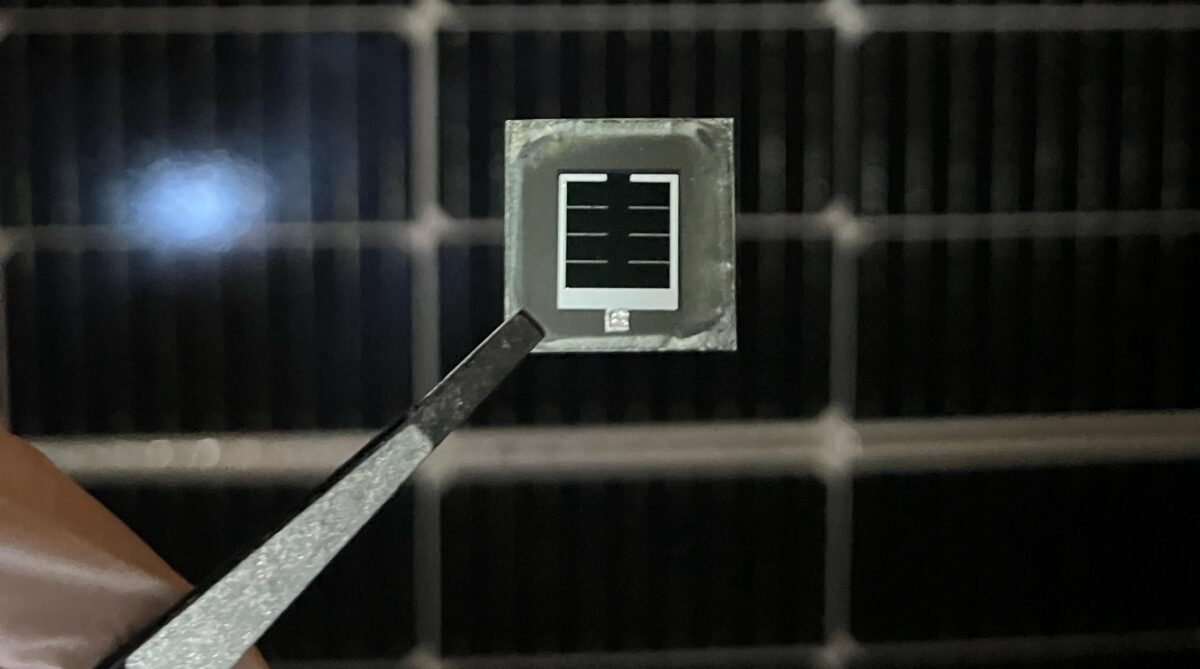Researchers from Princeton University in the United States and King Abdullah University of Science and Technology (KAUST) in Saudi Arabia have tested the reverse-bias stability of monolithic perovskite-silicon tandem cells, comparing their performance to single junction metal halide perovskite solar cells, and have found that the tandem device is “protected by the silicon subcell under reverse bias.”
In the paper “Reverse-bias resilience of monolithic perovskite/silicon tandem solar cells,” which was recently published in Joule., the scientists noted that the silicon subcell delivers a reverse-bias resilience in both long-term reverse voltage biasing tests at the single-cell level and partial shading tests at the module level.
“We knew that the silicon solar cell’s diode would be a substantially larger resistor in reverse bias compared to that of the perovskite solar cell. That means that the tandem should inherit the great stability of the silicon solar cell, rather than the poor reverse bias stability of the perovskite solar cell on its own,” the research's co-corresponding author, Barry P. Brand, told pv magazine.
He also explained that, normally, efforts to improve some aspect of a device, such as reverse bias stability, will then compromise some other aspect of its operation, for example, efficiency. “In this case, that is not so,” he stated. “The silicon-perovskite tandem cell is as efficient as things get, and also leads to better reverse bias stability. That’s one thing that is really noteworthy here.”
The researchers expect the results to be meaningful for the commercial prospects of silicon-perovskite solar cells, contributing to the advantages over other choices. “They are not only more efficient, but they do not suffer the reverse bias stability issue of a typical perovskite single junction solar cell. These factor in acutely to the commercial prospects of any solar technology,” said Brand.
Popular content
The team conducted a number of stress tests to compare the reverse-bias stability of three encapsulated cell technologies. Specifically, a perovskite single-junction cell, made with a triple cation perovskite solution spin-coated on glass, a silicon heterojunction single-junction heterojunction cell fabricated on a Topsil float zone wafer, and a monolithic perovskite-silicon tandem solar cell made with the same conditions and deposition techniques as the single junction test cells, except for the necessary tandem-enabling layers.
The cells were encapsulated in thermoplastic polyurethane with edge sealing between glass sheets. To mimic the reverse bias condition in a practical scenario, the cells were connected in strings. The partial shading test included an initial 5-min maximum power point tracking (MPPT) with all three cells exposed to 1-sun illumination, followed by fully shading one of the cells and continuing MPPT for 30 m, followed by an additional 10-minute MPPT with all three cells being exposed to 1-sun illumination. The team then measured the power output across the entire module, and the voltage drop across the shaded cells before, during, and after shading.
“The favorable voltage distribution rather than an overall improved breakdown voltage plays the most important role in the reverse-bias protection effect,” the researchers noted.
In concluding remarks, they said that the advantages of the tandem cell include higher efficiency, a well-developed manufacturing process, as well as being able to withstand reverse-bias stress for stability under partial shading conditions. As for the reverse-bias resilience of perovskite single junction cells, they noted that improvements will be needed for further research into areas such as processing technology and effective ion-blocking barrier layers.
This content is protected by copyright and may not be reused. If you want to cooperate with us and would like to reuse some of our content, please contact: editors@pv-magazine.com.


OK, I’m getting really frustrated here. I keep hearing of these new solar cells that have increasable efficiencies. I’ve been hearing of this for over 4 years now. When I go out to buy some of these things, there are none to be had anywhere. Where are they? I want one NOW! Come on now. Let’s get these things to market. Let’s say in 3 weeks I will be able to buy one on Amazon?